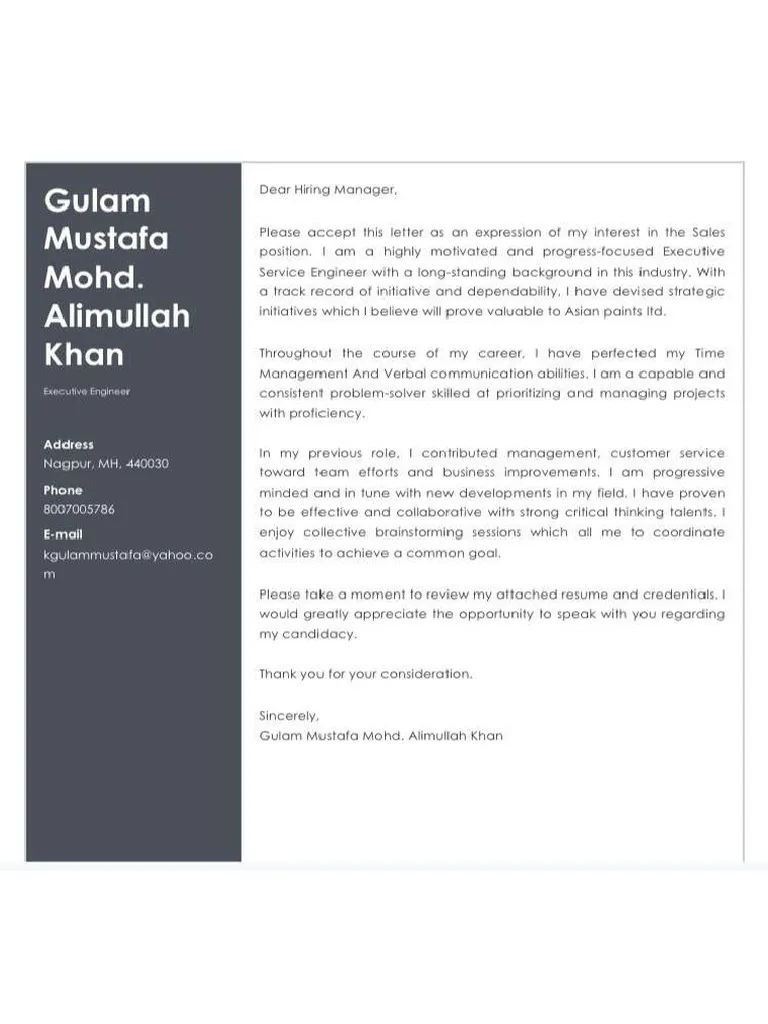Why Your Job Cover Letter Matters
In today’s competitive job market, a compelling job cover letter is your first chance to make a positive impression on a potential employer. It’s more than just a formality; it’s a strategic tool that can significantly increase your chances of landing an interview. While your resume provides a snapshot of your skills and experience, your cover letter allows you to tell your story, explain your career goals, and demonstrate why you are the perfect fit for the specific role and company. A well-crafted cover letter showcases your communication skills, highlights your personality, and conveys your genuine interest in the opportunity. It’s the perfect opportunity to set yourself apart from other applicants and make a memorable first impression. When done right, it can be the key to unlock the door to your dream job.
Key Components of a Powerful Job Cover Letter
A powerful job cover letter is built on several key components that work together to create a compelling narrative. Each element plays a crucial role in capturing the reader’s attention and persuading them to learn more about you. This involves careful attention to detail and a strategic approach to highlighting your strengths and qualifications. From the header to the closing, every word should be carefully selected to convey your enthusiasm and suitability for the position. By understanding these core components, you can craft a cover letter that is not just a document, but a powerful marketing tool that will help you stand out and get noticed by hiring managers.
Header and Contact Information
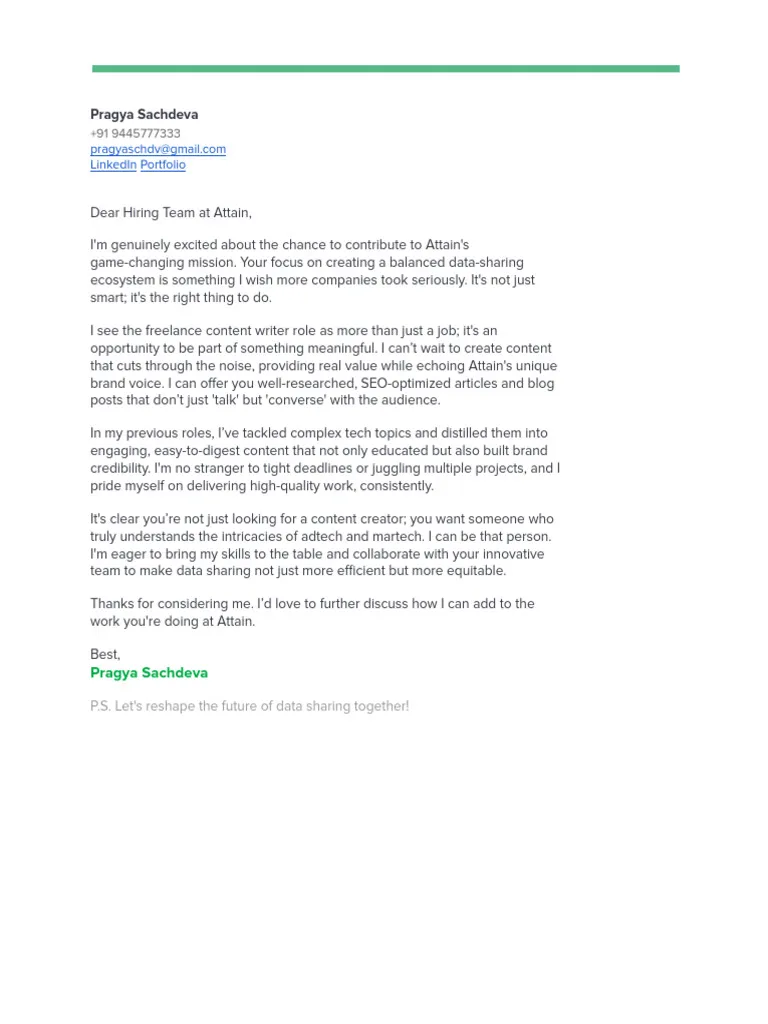
Start your cover letter with a professional header that includes your contact information. This should be at the top left or right of the page and include your full name, phone number, email address, and LinkedIn profile URL (if applicable). The header helps the hiring manager to easily find your contact information. It’s important to use a professional email address. Ensure the formatting is consistent with your resume and other application materials. This sets a tone of professionalism and attention to detail, which are critical for creating a positive initial impression. A well-formatted header shows you are organized and prepared.
Personalized Greetings
Avoid generic greetings like “To Whom It May Concern.” Instead, find the hiring manager’s name or the specific person who will be reading your application. Researching the company and job posting to find the name is a great way to personalize the cover letter. Using a name shows you’ve taken the time to learn about the company and the role, which demonstrates your genuine interest and effort. If you can’t find a name, use a role-specific greeting like “Dear Hiring Manager” or “Dear [Department] Team”. This personal touch immediately makes your letter more engaging and impactful.
Opening Paragraph Hook
The opening paragraph is your chance to grab the reader’s attention. Start with a hook – a compelling statement that immediately captures their interest. This could be a brief mention of a specific achievement related to the job requirements, or an expression of your excitement to apply. Avoid generic sentences such as “I am writing to apply for the position of…” which can be boring. Instead, use a short, strong statement that showcases your enthusiasm and shows why you are a good fit. This opening sets the tone for the rest of your letter, making the reader eager to learn more about you.
Highlighting Relevant Skills and Experience
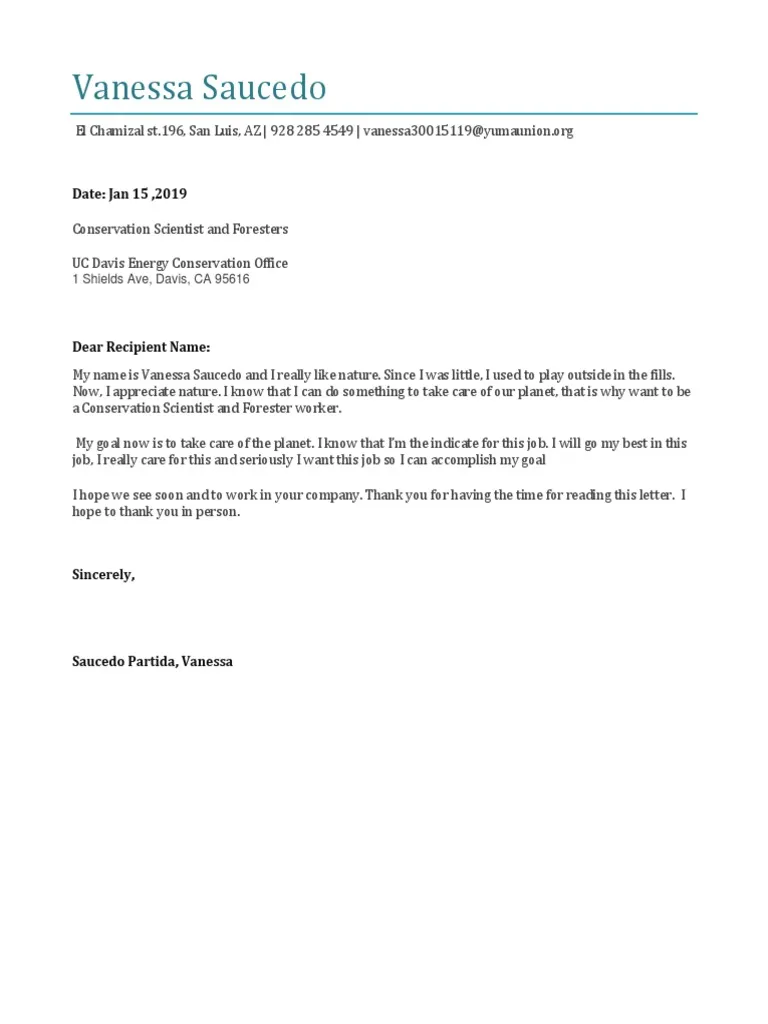
The core of your cover letter should highlight the skills and experience most relevant to the job description. Review the job posting carefully and identify the key requirements. Then, provide specific examples from your professional background that showcase these skills. Don’t just list skills; describe how you’ve used them to achieve results. Use action verbs to create a vivid picture of your accomplishments. Connect your skills with the company’s needs to demonstrate your value. This section is your chance to show, don’t just tell, the hiring manager why you are a great fit for the role.
Quantifying Achievements with Data
Whenever possible, quantify your achievements with data. Numbers and statistics provide concrete evidence of your capabilities and impact. Instead of saying “Improved sales,” say “Increased sales by 15% in one quarter.” Use metrics like percentages, dollar amounts, and specific results to support your claims. Quantifiable achievements make your cover letter more persuasive and demonstrate the real value you can bring to the company. This approach makes your accomplishments tangible and helps the hiring manager understand the positive impact you can have on the company.
Tailoring Your Cover Letter to the Job
Never use a generic cover letter. Customize each letter to the specific job and company. This means carefully reviewing the job description and tailoring your skills, experiences, and achievements to match the requirements. Mention the company’s name and show that you understand their mission, values, and goals. Show that you have done your research and that you are excited about the opportunity. Tailoring shows the hiring manager that you are genuinely interested in the role and have invested time and effort in the application. This personalization will increase your chances of getting noticed.
Researching the Company and the Role
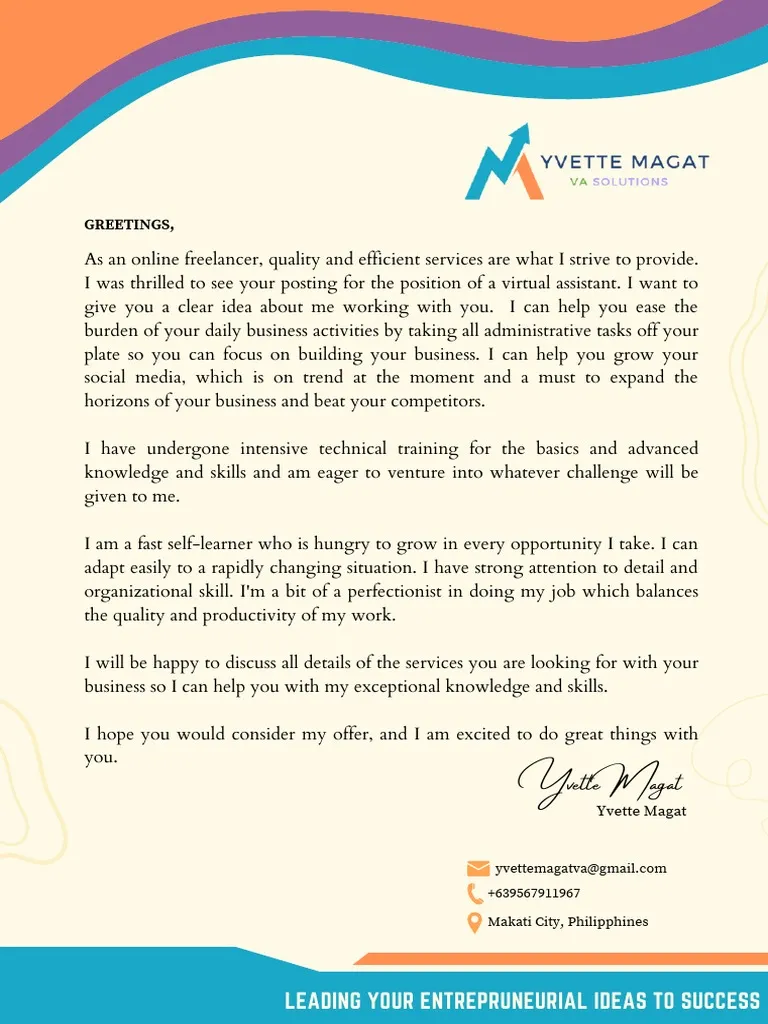
Before writing your cover letter, research the company and the specific role. Visit their website, read recent news articles, and check their social media profiles. Understand the company’s values, culture, and recent projects. This information will help you tailor your cover letter and show that you understand the company’s needs. This research shows your genuine interest and demonstrates that you are more than just an applicant, you are someone who wants to be part of their team. This proactive approach will give you a significant edge.
Using Keywords Effectively
Use keywords from the job description throughout your cover letter. These keywords are what the hiring manager is looking for, and they can also help your application get noticed by Applicant Tracking Systems (ATS). Integrate keywords naturally into your writing, without overusing them. This involves incorporating relevant terms from the job description into your description of skills and experiences. This will make your cover letter more relevant and increase your chances of it being seen by the hiring team. However, ensure the language flows well, making sure it’s not repetitive.
Showcasing Your Personality and Enthusiasm
Your cover letter is an opportunity to show your personality and enthusiasm. Let your passion for the role and the company shine through your writing. Use a positive and enthusiastic tone, but remain professional. Show your personality by highlighting your unique skills and experience that makes you stand out. Your enthusiasm can convince a potential employer that you’re serious about the role and the company. This can make you more memorable than other candidates.
Closing the Cover Letter
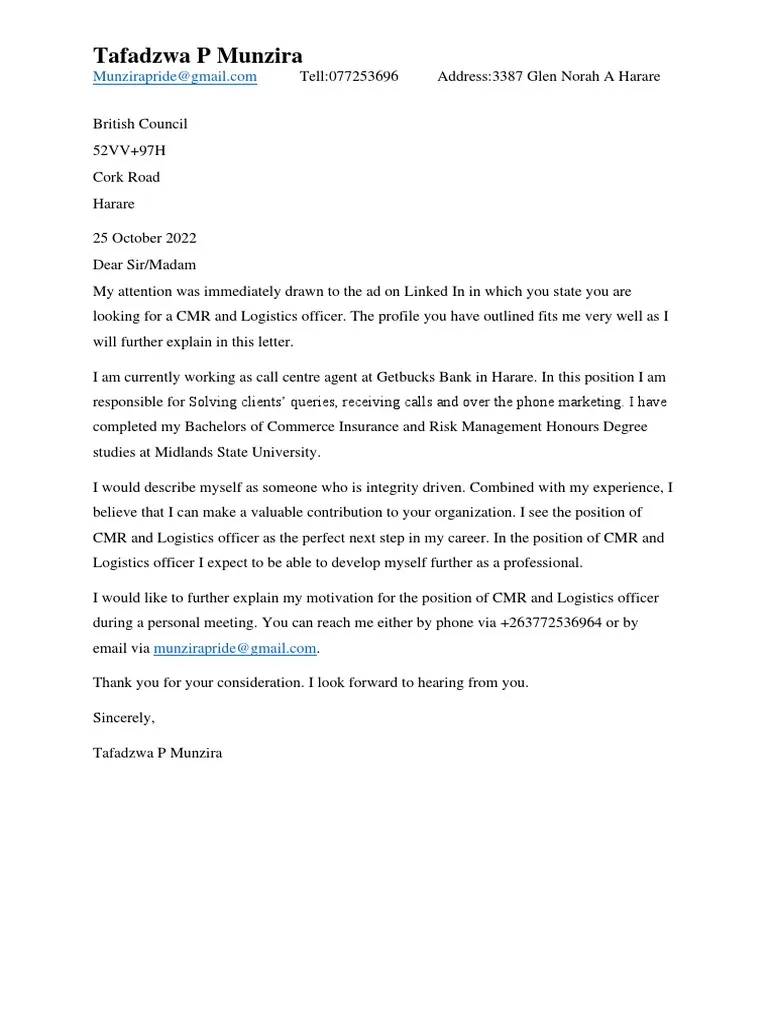
Your closing paragraph should include a call to action and express gratitude. Thank the hiring manager for their time and consideration. State that you’re eager for the opportunity to discuss your qualifications further and that you’re available for an interview at their earliest convenience. This final touch reiterates your interest and makes it easy for the hiring manager to contact you. A clear call to action ensures the reader knows the next step and increases your chances of moving forward in the application process.
Call to Action and Expressing Gratitude
Include a clear call to action in your closing paragraph. This can be a simple statement indicating your availability for an interview or your desire to discuss the position further. Show your appreciation by thanking the hiring manager for their time and consideration. This reinforces your professionalism and shows respect for their time. This final gesture ensures you leave a positive impression and enhances your chances of a response.
Proofreading and Formatting
Proofread your cover letter meticulously to avoid errors. Spelling mistakes, grammatical errors, and typos can damage your credibility. Check the document several times and consider having someone else proofread it as well. Pay close attention to the formatting to ensure it’s clean, readable, and professional. Use a standard font and appropriate spacing. A well-formatted cover letter shows attention to detail and professionalism, increasing your chances of making a positive impression.
Formatting for Readability

Format your cover letter for readability. Use a clear and professional font like Times New Roman, Arial, or Calibri. Maintain consistent spacing, and use short paragraphs. A well-formatted cover letter is easy to read and looks professional. This helps the hiring manager to easily scan and absorb the information. Avoid overly complex formatting, and always prioritize clarity and ease of reading.
Common Cover Letter Mistakes and How to Avoid Them
Avoiding common cover letter mistakes can significantly improve your chances of success. These mistakes can diminish your chances of being selected. Familiarizing yourself with these mistakes can save you from making them and help you get a better chance of landing your dream job.
Generic Cover Letters
A generic cover letter that could be sent to any company is a major turn-off. Tailor each letter to the specific job and company. Research the company, read the job description carefully, and highlight the skills and experiences that align with the requirements. Personalize the letter to make it clear that you’re interested in the specific opportunity. This shows you care and have taken the time to create a compelling cover letter.
Typos and Grammatical Errors
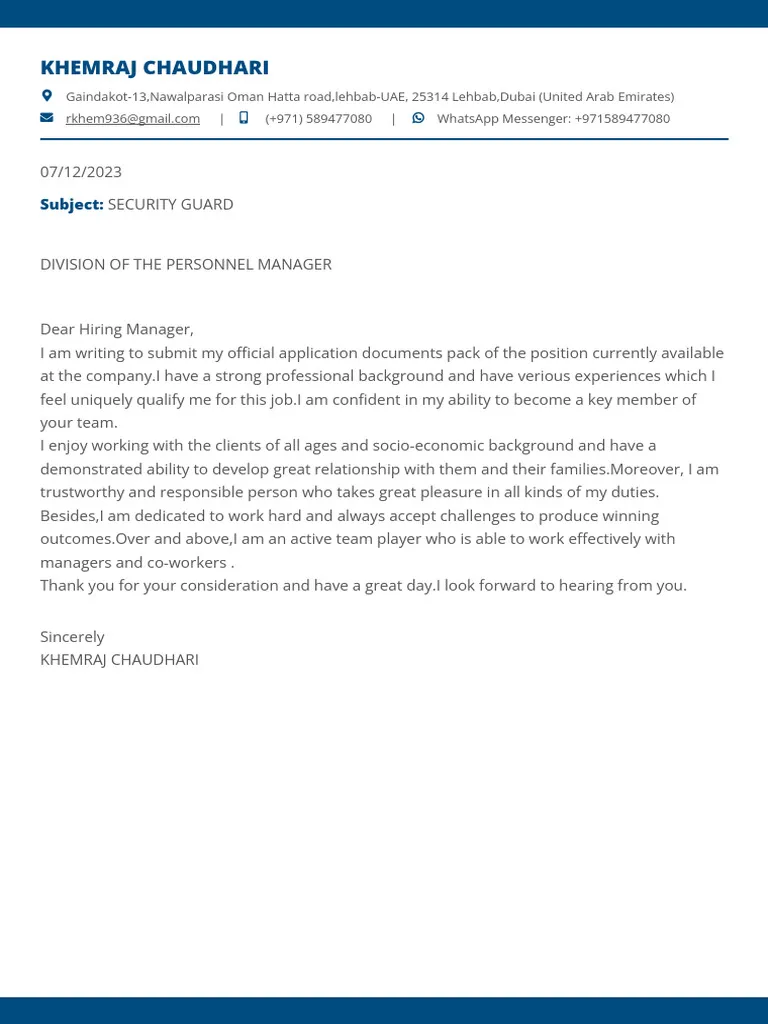
Typos and grammatical errors are easily avoidable but can severely undermine your credibility. Proofread your cover letter meticulously and have someone else review it. Errors show a lack of attention to detail and professionalism. Checking your writing can help avoid these mistakes and ensure that you are portraying your best self to prospective employers. Take the time to revise your work and ensure everything is in good working order.
Ignoring the Job Description
Ignoring the job description is a mistake. Always review the job description carefully and tailor your cover letter to match the requirements. Highlighting relevant skills and experiences is important. Mentioning the company’s keywords can also enhance the chances of your application. This shows the hiring manager you have taken the time to understand what the employer wants, significantly boosting your chances.
Overusing Jargon
Avoid using jargon that the hiring manager might not understand. Use clear, concise language and avoid industry-specific terminology unless you’re certain the reader is familiar with it. Using straightforward language makes your cover letter accessible and understandable. This will help ensure the reader is able to understand your skills and experiences, making it more impactful.
Job Cover Letter Samples for Various Industries
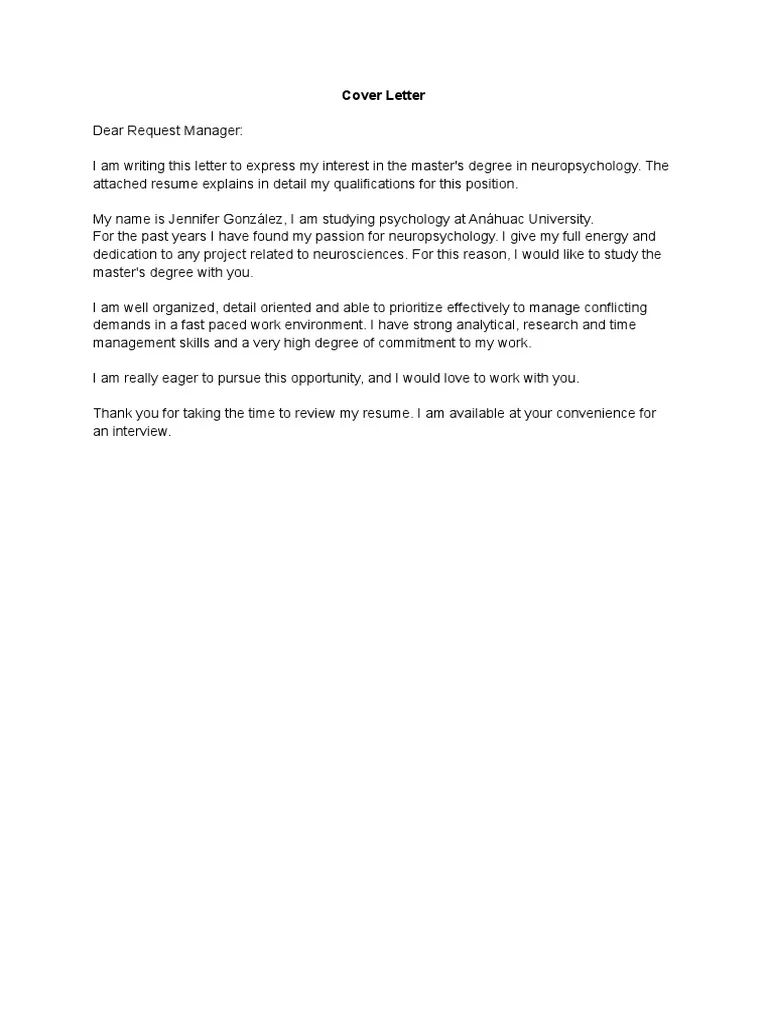
Different industries and roles require different approaches to cover letters. For example, a cover letter for a creative role may be more informal and showcase your design skills. A cover letter for a finance position should be more formal and emphasize your analytical skills. Review cover letter samples to get ideas for different industries. Tailoring your cover letter according to the industry norms will help to get you a positive outcome.
Tips for Different Career Levels
Your approach to writing a cover letter will vary depending on your career level. Entry-level candidates should focus on highlighting their skills and education, and demonstrating their eagerness to learn. Mid-career professionals should emphasize their achievements and leadership. Executive-level candidates should focus on their experience, strategic thinking, and ability to drive results.
Entry-Level Cover Letters
Entry-level candidates can highlight their skills and educational background to demonstrate their readiness and eagerness to learn. Emphasize any relevant projects, internships, or volunteer experiences. Highlight your soft skills, such as communication, teamwork, and problem-solving. Show enthusiasm for the position and the company. This approach will help the hiring manager see you as a valuable future employee.
Mid-Career Cover Letters
Mid-career professionals should emphasize their achievements and career progression. Quantify accomplishments with data and metrics. Showcase any leadership experience, such as managing teams or driving projects. Show how your skills and experience align with the job requirements and the company’s strategic goals. This allows the hiring manager to understand your ability to achieve results.
Executive-Level Cover Letters
Executive-level candidates should emphasize their strategic thinking, leadership capabilities, and ability to drive results. Showcase your experience leading teams and achieving significant business outcomes. Highlight your understanding of the company’s industry and market. Demonstrate your ability to create and implement strategies. This helps show that you are the right leader for the company.
Final Thoughts
A well-crafted job cover letter is a powerful tool in your job search arsenal. By following these tips and tailoring your letter to each specific opportunity, you can significantly increase your chances of landing an interview. Remember to be professional, enthusiastic, and show genuine interest in the role and company. Use these secrets to create a compelling cover letter, and you’ll be well on your way to landing your dream job. Good luck with your job search!
